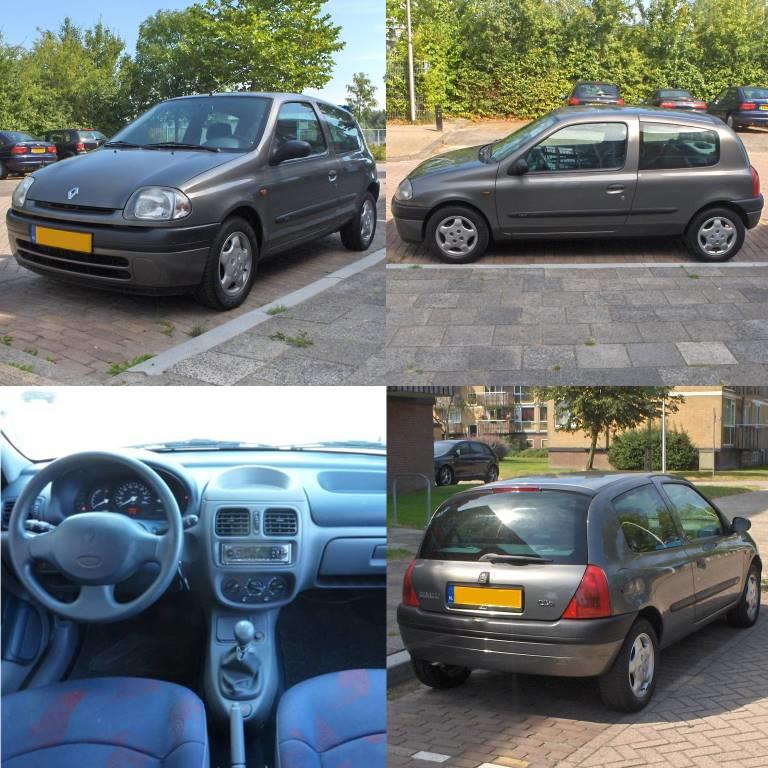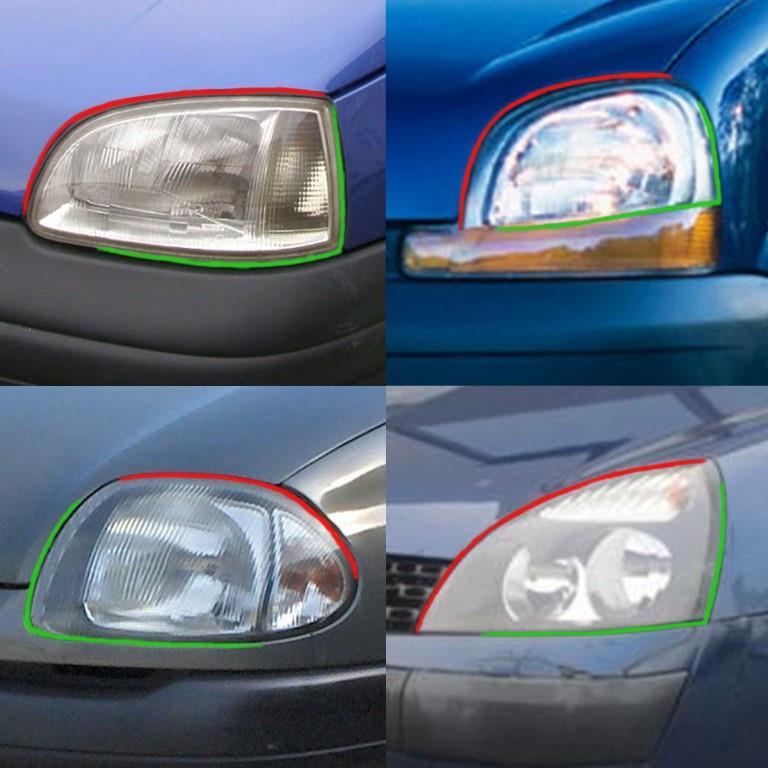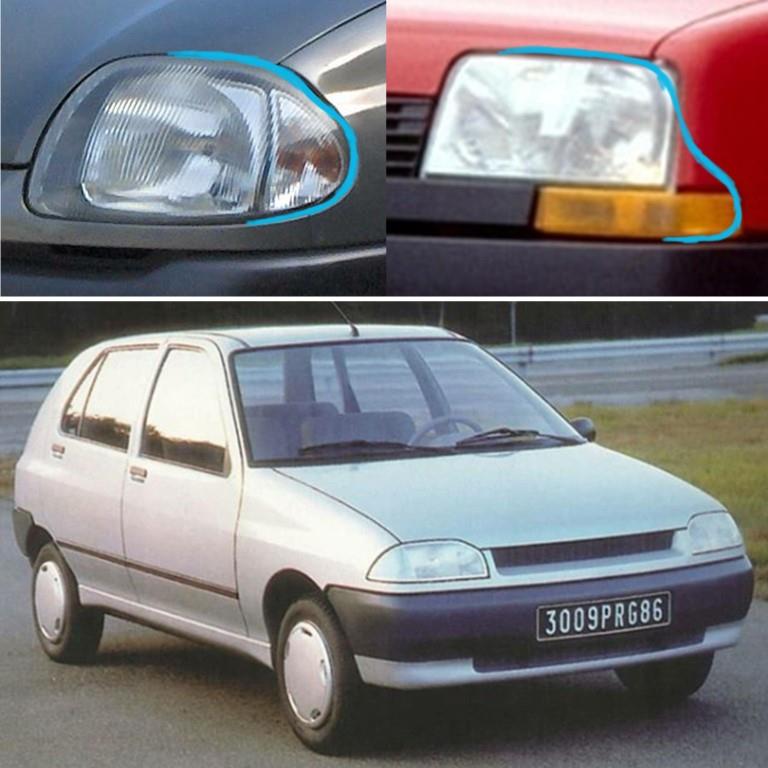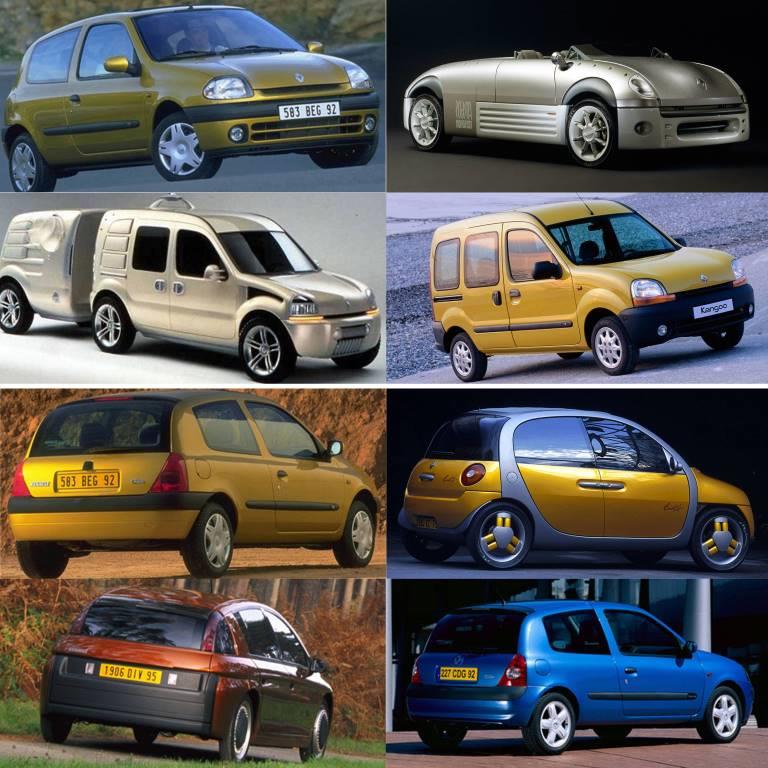MY CLASSICS
Renault Clio
Cars
| 06-09-2019
A sympathetic little French diesel car, that's what my first car had to be. A small Peugeot - a 106 or 206 - for example, but I eventually went for a Clio. And only when I did have a Clio, it became one of my classics. You won't find a car that's much more sympathetic than the Clio II, I think.
My Clio was a 1.9D from 1999 in the basic version (so no RT or RN), but with partly sprayed bumpers. There were no fog lamps, air conditioning (at that time not present on a Clio anyway, because it really still was a luxury) and central door locking, and you had to swingle to open the front side windows. In the rear it had folding windows, because it was a

The agreeable nature of the car was also clearly visible in the design of the car. I remember seeing the first press photos directly on page 3 of the Dutch magazine AutoWeek. In my memory a golden-yellow car, as in the pictures on this page. Normally the news was always one or two pages further down, so I suspect the photos were included at the last minute. What struck me most were the




The rear light units form a continuous line with the bottom of the rear window and are completely red (as on the 1996 Peugeot 106 and the 206, the largest competitor to the Clio...). After the facelift, the Clio got the white circle in the rear lights that could already be seen on the Ludo, which makes the car optically wider when seen from the rear. Still, I prefer the version before the facelift. Because I think that's a balanced design, with one clear
My Clio was a 1.9D from 1999 in the basic version (so no RT or RN), but with partly sprayed bumpers. There were no fog lamps, air conditioning (at that time not present on a Clio anyway, because it really still was a luxury) and central door locking, and you had to swingle to open the front side windows. In the rear it had folding windows, because it was a
three-doorCar with a door on each side and a large tailgate up to the roof
. The color: dark gray metallic, in my eyes perfectly matching the easy-going nature of the car.

My Clio
With 65 hp and an acceleration from 0 to 100 km/h in 15.4 seconds, you also had to be easy-going in your driving, because overtaking quickly wasn't possible. On the highway, the little diesel engine grumbled as if it had to pull a tractor, with the result that I heard my music without all the tones in the low range. And yet I thought it was a wonderful car. Overlooking the blue-graydashboardThe instrument panel under the windshield, with counters, buttons etc.
with a retrofitted radio, I have covered quite some highway kilometers.
The agreeable nature of the car was also clearly visible in the design of the car. I remember seeing the first press photos directly on page 3 of the Dutch magazine AutoWeek. In my memory a golden-yellow car, as in the pictures on this page. Normally the news was always one or two pages further down, so I suspect the photos were included at the last minute. What struck me most were the
headlightLight unit at the front of a car
s. They had a completely different shape from what I expected.

Timeline of the Renault 5 and Clio
Renault had introduced the first Clio in 1990, a somewhat smaller and more angular model. Also a very nice car, by the way. In 1994, that model wasfaceliftUpdate of an existing model, often with slightly modified design
ed: among other things, larger, brighter headlights were mounted. I remember that at the time I found those new 'round eyes' quite on the big side. In 1997, Renault showed the Pangea concept, the forerunner of the first Kangoo, which came on the market later that year. The shape of the headlights was basically the same as on the 1996 Clio, but then a size bigger and supplemented with an orange indicator underneath, which I have always seen as a reference to the 1984 Renault 5.

Arcs and angles in the headlights of the Clio (1996), Kangoo (1997), Clio II Phase 2 (2001) and Clio II (1998).
I expected the Clio to have similar headlights. So when I saw the first pictures, I was surprised to see headlights that seemed to be 'the other way around'. Take a look with me: with the Clio of '96 and the Kangoo the headlights have an arc on the inside and a 'corner' at the bottom on the outside. With the 2001 facelift, the Clio II also got headlights with a similar shape. The Clio II of 1998 had more or less the opposite: the 'corner' is on the inside and the outside is convex.
Above: The headlight of the Clio II next to that of the 5 'Supercinq'. | Below: 1986 prototype for the Clio I [Photo: via @vavon205]
If you look closely, you will see that there's a wave in that convex line. I've always imagined that it was created as a reference to the headlights of the 1984 Renault 5. That model also had a somewhat surprised look. If you draw a loose line around the headlights-including-indicators of the Supercinq, then (with a little imagination) you get about the shape of the headlights on the Clio II. I also see things like the 'smooth' appearance and the placement of the rear lights as references to the R5. Incidentally, I recently saw a 1986 prototype for the first Clio on Instagram; the front end of it looks a bit like an old-fashioned version of the front that adorned the Clio II. Coincidence? Or would they have developed an old idea?
Upper half: the Clio II, Argos, Pangea and Kangoo I. | Lower half: the Clio II, Ludo, Next and Clio II Phase 2
Of course the Clio is more than a more modern interpretation of the R5. In 1998 I didn't see it yet, but the rising line of the rear side windows that optically extends into the roof seam of the tailgate had already been shown by Renault. On the 1994 Ludoconcept carStudy model; often a show car to sound out reactions
you can already see the convex rear window. (Which in the Clio, by the way, somewhat distorted the view in the rear-view mirror…) On the 1995 Next concept, the convex rear window returns and besides that it has the black roof spoiler that was also on the Clio. On the Next, the line really continues over the side of the car, ending at the back of the C-pillar
, instead of the front, as on the Clio. The Next has an extra side window behind it, which is only separated from the rear window by the high rear lights. That extra side window is absent on the Clio, which has a wide C-pillar instead, that does have the same bulging.

The rear light units form a continuous line with the bottom of the rear window and are completely red (as on the 1996 Peugeot 106 and the 206, the largest competitor to the Clio...). After the facelift, the Clio got the white circle in the rear lights that could already be seen on the Ludo, which makes the car optically wider when seen from the rear. Still, I prefer the version before the facelift. Because I think that's a balanced design, with one clear
form languageThe type of shapes used in a design, eg round or angular
. But mainly because it's such a nice characteristic model, with a very good-natured appearance.
MY CLASSICS
In the My classics section, I add a model to my digital collection of classics every other week. For that, I select cars whose design appeals to me or evokes memories. So nostalgia, and very subjective. Hence the section title: my classics.
In the next episode: Evolution and revolution in one car design...
